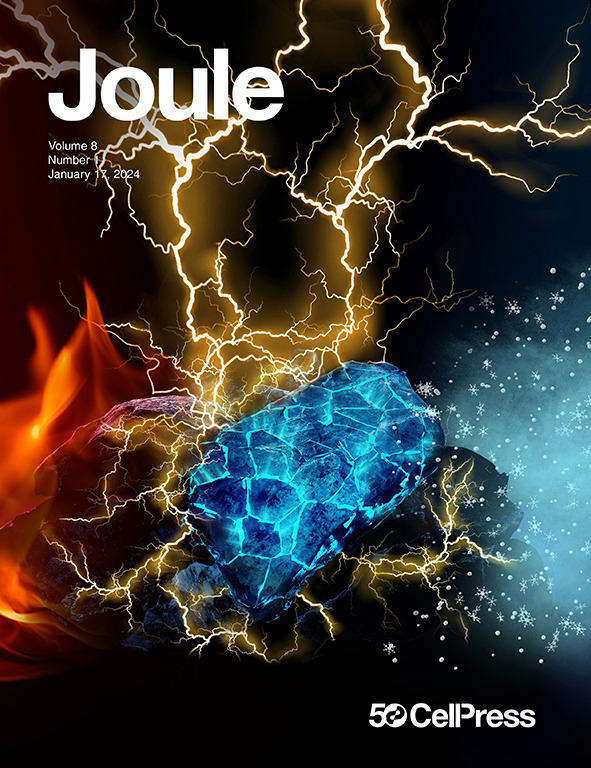钠介导的氧化还原级联电化学合成氨
IF 35.4
1区 材料科学
Q1 CHEMISTRY, PHYSICAL
引用次数: 0
摘要
人工合成氨对现代生活至关重要;然而,合成大多数氨的哈伯-博世工艺是资本和碳密集型的。零价金属介导的氨合成是一种很有前途的替代方法,但需要一种既强还原剂又能形成稳定氮化物的金属。只有少数金属,如锂,可以满足这些限制。因此,我们开发了一种电化学模式,通过将零价金属在金属钠和Ti活性位点之间的作用正交化,使不同还原剂的使用成为可能。这些组件比锂便宜两个数量级。使用钠-萘-钛级联,我们获得了475 nmol cm−2 s−1的反应速率和24%的法拉第效率,并发现反应速率主要取决于电流密度。本文章由计算机程序翻译,如有差异,请以英文原文为准。


Sodium-mediated redox cascade for electrochemical ammonia synthesis
Artificial ammonia synthesis is vital to modern life; however, the Haber-Bosch process, by which most ammonia is synthesized, is capital and carbon intensive. Zero-valent-metal-mediated ammonia synthesis is a promising alternative but requires a metal that is both a strong reductant and forms a stable nitride. Only a small number of metals, like lithium, can satisfy these constraints. Therefore, we developed an electrochemical paradigm enabling the use of different reductants by orthogonalizing the roles of the zero-valent metal between sodium metal and a Ti active site. These components are cheaper than lithium by two orders of magnitude. Using a sodium-naphthalene-titanium cascade, we achieved a rate of 475 nmol cm−2 s−1 and a Faradaic efficiency of 24% and found that the reaction rate depends primarily on current density.
求助全文
通过发布文献求助,成功后即可免费获取论文全文。
去求助
来源期刊

Joule
Energy-General Energy
CiteScore
53.10
自引率
2.00%
发文量
198
期刊介绍:
Joule is a sister journal to Cell that focuses on research, analysis, and ideas related to sustainable energy. It aims to address the global challenge of the need for more sustainable energy solutions. Joule is a forward-looking journal that bridges disciplines and scales of energy research. It connects researchers and analysts working on scientific, technical, economic, policy, and social challenges related to sustainable energy. The journal covers a wide range of energy research, from fundamental laboratory studies on energy conversion and storage to global-level analysis. Joule aims to highlight and amplify the implications, challenges, and opportunities of novel energy research for different groups in the field.
 求助内容:
求助内容: 应助结果提醒方式:
应助结果提醒方式:


